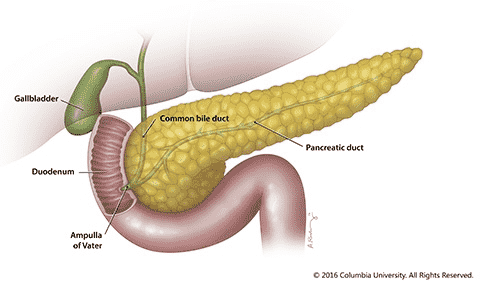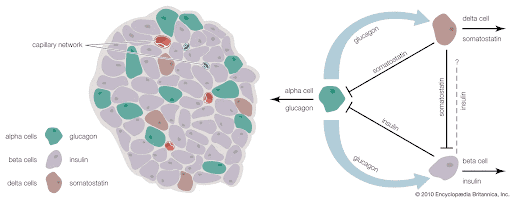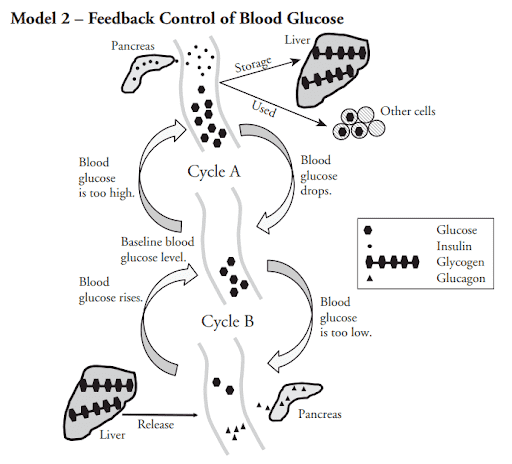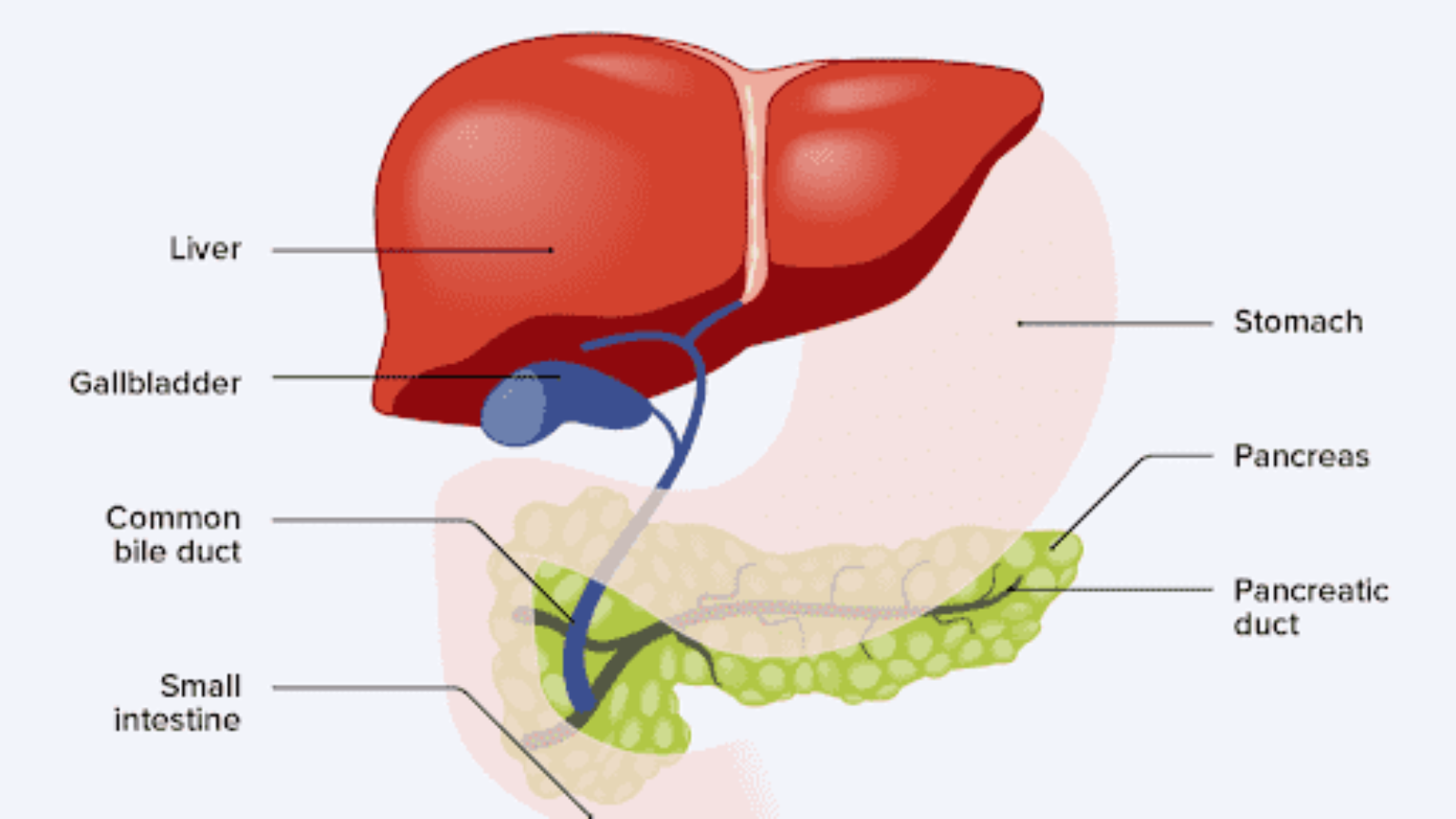
The pancreas is an intriguing organ, situated behind the stomach and surrounded by other essential organs like the small intestine, liver, and spleen. It holds significant importance in our body’s functions.
The pancreas contains four main sections: The head of the pancreas is located where the stomach meets the first portion of the small intestine, so the pancreas can directly release its digestive enzymes into the intestine. The middle section comprises the neck and the body, and the tail is the tip of the pancreas!
Now that we’ve covered the basic anatomy of the pancreas, we get into the riveting details! The pancreas is a unique organ—it serves as both an exocrine and endocrine gland. An exocrine organ releases substances directly into nearby tissues, whereas an endocrine organ releases substances directly into the bloodstream. Pretty cool, huh? But here’s the real kicker: the exocrine part of the pancreas is responsible for secreting digestive enzymes, as mentioned earlier, while the endocrine part secretes the hormone insulin! It’s almost like a multitasking superstar.
Let’s get into detail about the digestive enzymes I’ve been talking about since they’re a pretty broad term. In a nutshell, the pancreas will secrete about 4 enzymes into a network of ducts, ultimately connecting to the main pancreatic duct, which merges with the bile duct to form the ampulla of Vater in the duodenum. The bile duct starts up in the gallbladder and contains bile that is also needed to break down food. Okay, that was a lot of vocabulary I just threw at you, so let me aid you with a diagram of the complex of ducts!

| Chymotrypsin | Digest proteins |
| Trypsin | Digest proteins |
| Amylase | Digestion of carbohydrates |
| Lipase | Break down lipids |
Now that we’ve talked about the exocrine function of the pancreas, we should go into the endocrine function! The endocrine function is probably the function that most people are familiar with – the production of insulin. The endocrine component only makes up about 5% of the pancreas, as opposed to exocrine tissue which makes up 95% of the pancreas. The endocrine component is composed of clusters of endocrine cells, or clumps of islets of Langerhans. These islets are not one cell, rather they are composed of many different types of cells which will be explained in the diagram below.

One molecule everyone associates the pancreas with would be insulin – and rightfully so! Insulin is extremely important for the body and without it, your blood sugar would remain unregulated, leading to potential complications and imbalances. Insulin, along with glucagon, are both released by the pancreas.

As seen in the diagram above, the pancreas releases insulin into the blood for the blood glucose to be stored in the liver (or for use in cells). Then, when blood sugar falls too low, the pancreas can also release glucagon so the liver will release some glucose into the blood! This system is very complex and is in a delicate balance. When one aspect of the system goes awry, the entire thing falls apart – like in the case of diabetes.
Diabetes can be classified into 3 parts, Type 1 diabetes, Type 2 diabetes, and gestational diabetes. Though no one knows exactly how Type 1 diabetes is caused, or how to prevent it; scientists think that Type 1 diabetes could be caused by an autoimmune reaction, so the body stops making insulin. This issue mostly affects children, teens, and young adults, and only makes up about 5-10% of diabetes cases. Sadly, individuals with Type 1 diabetes have to take insulin every day to survive.
Type 2 diabetes is a little different. Type 2 diabetes is caused by insulin resistance. Insulin resistance is when the body’s cells don’t respond to insulin anymore (or when the body doesn’t make enough insulin). Due to this circumstance, the liver and body may not effectively uptake glucose, causing it to accumulate in the bloodstream. As I said before, Type 2 diabetes can also be caused by the body’s cells not making enough insulin – for Type 2 diabetes to develop, the islet cells cannot make enough insulin, AND there is insulin resistance.
The development of Type 2 diabetes follows a unique pattern, commencing with insulin resistance, which elevates the level of fatty acids in the blood plasma. Consequently, the transportation of glucose into the cells is hindered (insulin resistance), leading the liver to generate and release glucose to meet the demand. The liver achieves this through gluconeogenesis, a process of glucose production, and also by breaking down glycogen to produce glucose (glycogenolysis). This glycogen comes from the insulin storing glucose in the blood! Type 2 diabetes, previously, was only present in older ages, but with the rising rates of obesity in younger people, it is increasing in younger ages as well.
Gestational diabetes, again, is a little different and develops in pregnant women who have never had diabetes. This is caused by when the body cannot make the extra insulin necessary for the blood glucose to be uptaken into the cells. Usually, the diabetes is gone after the baby is born, but having gestational diabetes could put the mother at risk for type 2 diabetes later, and for the baby to be obese or have type 2 diabetes later in life.
So we know about what diabetes is, but what about the other diseases of the pancreas?
Pancreatitis is an inflammation of the pancreas that happens when the enzyme secretions mentioned previously in this article begin to build up and digest the pancreas itself! This can be quick and acute (just a few days), but longer and chronic as well (years).
Pancreatic cancer is caused by an exocrine tumor coming from the cells that line the pancreatic duct. This is called pancreatic adenocarcinoma, and accounts for less than 5% of all pancreatic tumors. There are many other types of exocrine pancreatic cancers as well, which all makeup more than 95% of pancreatic cancer cases. Some examples are adenocarcinoma, squamous cell carcinoma, adenosquamous carcinoma, and colloid carcinoma. However, pancreatic cancers can also arise from the endocrine glands. Examples would be neuroendocrine pancreatic cancer and benign precancerous lesions.
The pancreas truly is an amazing and intricate organ – it has both endocrine and exocrine functions! But it is also a fickle organ and has many diseases and cancers associated with it. The system of insulin, glucagon, the pancreas, and blood glucose have to stay in perfect harmony to ensure good function of the body and prevent diabetes.
Sources:
- https://columbiasurgery.org/pancreas/pancreas-and-its-functions#:~:text=The%20pancreas%20is%20an%20organ,function%20that%20regulates%20blood%20sugar.
- https://www.medicalnewstoday.com/articles/10011#disorders
- https://www.ncbi.nlm.nih.gov/books/NBK542302/
- https://www.britannica.com/science/islets-of-Langerhans
- https://www.hopkinsmedicine.org/health/conditions-and-diseases/pancreatic-cancer/pancreatic-cancer-types
- https://www.niddk.nih.gov/health-information/diabetes/overview/what-is-diabetes/gestational/symptoms-causes#:~:text=What%20causes%20gestational%20diabetes%3F,control%20your%20blood%20glucose%20levels.
- https://nickrath.weebly.com/uploads/6/5/4/1/6541061/28_control_of_blood_sugar_levels-s_copy.pdf
- https://www.cdc.gov/diabetes/basics/diabetes.html
- https://www.nhsinform.scot/illnesses-and-conditions/diabetes/type-2-diabetes
- https://www.ncbi.nlm.nih.gov/pmc/articles/PMC4259868/
Find more interesting science content at https://projectcleris.org


Add a Comment